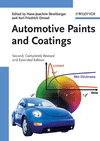Revolutionary Anti-Thrombogenic Coating for Stents Promises Safer, Faster Healing

Image courtesy of Scientific Reports.
A researcher at Advanced Industrial and Science Technology (AIST), working with the Japan Medical Startup Incubation Program (JMPR), and N.B. Medical Corporation, has created a new anti-thrombogenic coating for stents used in treating intracranial aneurysms. The findings were published in Scientific Reports on July 10, 2024. Advancements in medical technology have made minimally invasive endovascular treatments the primary method for intracranial aneurysm treatment, which is a major cause of subarachnoid hemorrhage.
Coil embolization with a stent is particularly noted for its safety and effectiveness, becoming a widely accepted endovascular treatment method. However, this method has risks of vascular occlusion due to thrombus formation, necessitating antiplatelet medication because of blood incompatibility with the stent.
Although many antithrombotic coatings have been explored to mitigate thrombus formation, traditional polymers, while reducing thrombus risk, also hinder the stent's integration with the vessel (endothelialization), crucial for complete healing. Poor cell adhesion delays endothelialization, prolonging stent coverage and healing, thus extending the period of antiplatelet medication and increasing bleeding risks.
Clinically, there has been a demand for coatings that combine antithrombotic properties with cell adhesion without impairing endothelialization. These properties are typically conflicting, and no such coating materials have been available. The researchers discovered a new anti-thrombogenic coating that selectively captures non-coagulant proteins from the blood, thereby preventing blood coagulation on the stent's surface through a blocking effect.
This technology, which controls protein adsorption instead of inhibiting it, offers anti-thrombogenic benefits while enhancing cell adhesion. This improvement accelerates the stent's coverage with the vessel, leading to faster completion of stent therapy.
The technology reduces thrombotic complications associated with stent therapy, shortens treatment duration, and lowers antiplatelet drug usage, thereby lessening patient burden and contributing to reduced medical costs.
Read the AIST article here: https://medicalxpress.com/news/2024-07-scientists-anti-thrombogenic-coatings-endovascular.html?deviceType=desktop.
Looking for a reprint of this article?
From high-res PDFs to custom plaques, order your copy today!





